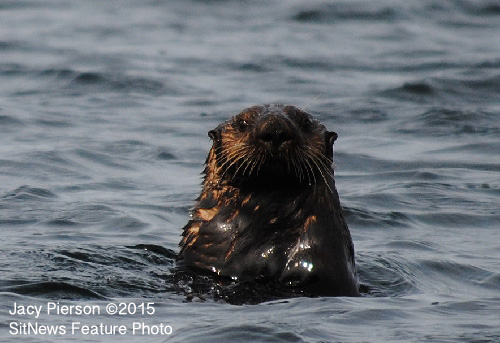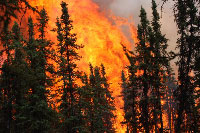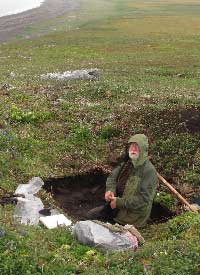










 Weekly Specials
Weekly Specials |




 Contact Contact 
 Call 617-9696 Call 617-9696
 Webmail
Letters Webmail
Letters
 News Tips News Tips 
 Copyright Info Copyright Info
 Archives Archives
Quick News
Search
 Alaska Alaska
 Ketchikan Ketchikan
 SE Alaska SE Alaska
 Alaska News Links Alaska News Links
Columns
- Articles
 Dave Kiffer Dave Kiffer
 Fish
Factor Fish
Factor
 Money Matters Money Matters
Historical
Ketchikan
 June Allen June Allen
 Dave
Kiffer Dave
Kiffer
 Louise
B. Harrington Louise
B. Harrington
Ketchikan
Arts & Events
 Ketchikan
Arts Ketchikan
Arts
 Ketchikan
Museums Ketchikan
Museums
 KTN Public
Library KTN Public
Library
Sports
 Ketchikan Links Ketchikan Links
Public Records
 FAA Accident Reports FAA Accident Reports
 NTSB
Accident Reports NTSB
Accident Reports
 Court Calendar Court Calendar
 Recent Filings & Case Dispositions Recent Filings & Case Dispositions
 Court Records Search Court Records Search
 Wanted:
Absconders Wanted:
Absconders
 Sex Offender Reg. Sex Offender Reg.
 Public Notices Public Notices
Weather,
Webcams
 Today's
Forecast Today's
Forecast
 KTN
Weather Data KTN
Weather Data
 AK
Weather Map AK
Weather Map
 AK Weathercams AK Weathercams
 AK Earthquakes AK Earthquakes
TV Guide
 Ketchikan Ketchikan
Ketchikan
Phone Book
 Yellow
Pages Yellow
Pages
 White
Pages White
Pages
Government
Links
 Local Government Local Government
 State & National State & National

|
|

Thursday
August 06, 2015

|
Prince of Wales: Friendly Otter
An aquatic member of the weasel family, sea otters eat, sleep, hunt, mate, and give birth in the water. They also use rocks as tools to crack open mussels.
Front Page Photo By JACY PIERSON ©2015
Click Here to express your appreciation to the photographer and select your Favorite Front Page Photo(s) of the Month
(Submit your photograph to be featured on the SitNews' front page. Email photo to editor@sitnews.us include your name and a brief photo description.)
Southeast Alaska: Tourism in Southeast: Visitor-related jobs a key part of the regions's economy - Tourism's rise in Southeast Alaska was tied primarily to the development of cruise lines, which helped the region's economies flourish and continue to transport the vast majority of Southeast's visitors.

Employees of the Blue Fox Restaurant in Ketchikan pose behind the bar in the early-to-mid 20th century.
Photo by the Skinner Foundation, Alaska Steamship Company, Alaska State Library
Today, around a million people visit Southeast Alaska each summer, and most arrive by cruise ship according to a new Alaska Economic Trends report written by Connor Bell, an Alaska Department of Labor economist in Juneau, specializing in the employment and wages of the Southeast and Southwest economic regions.
Tourism was one of Alaska's first industries, and Southeast was the first visitor destination. During the late 19th century, small numbers of tourists traveled north on steamships, sharing space with miners, fishermen, and aspiring business owners in the new territory.
Throughout the next 100 years, the romance of Alaska sank deeper into the American consciousness. Many idealized the ruggedness of Alaska, and it became a point of pride even among Americans who had never seen it.
Though many miners returned home empty-handed, stories of Alaska's natural beauty spread further after the Klondike Gold Rush. Naturalists such as John Muir published detailed accounts of the territory. Sitting President Warren G. Harding traveled through Alaska shortly before his death. Hollywood began producing films set in Alaska.
Steamships fall from favor
Though acclaim for Alaska was widespread, steamships' limited capacity and expense restricted the number of travelers to Southeast. Vacationing by steamship was mostly limited to wealthy travelers, and it lacked the comforts available elsewhere. In 1929, a traveler-class round trip between Seattle and Skagway cost around $90, equivalent to about $1,250 in 2015.
The U.S. built the Alaska-Canada Highway during World War II, and though the Alcan increased traffic into Alaska, most of its travelers went farther north to Southcentral or Fairbanks.
By the 1960s, streamship travel dwindled with the rise of air travel. The U.S. had a huge stock of aircraft at the end of the war, and it provided subsidies and discounts for emerging airlines to purchase surplus army airplanes.
Steamships couldn't compete with the airlines' rates, and sea trips took days rather than hours. Alaska Steamship Company, the last holdout, ended passenger service in 1954. Though Juneau and Annette Island had runways, Alaska's tourist traffic was largely diverted from Southeast.
After steamships became archaic, newly formed cruise line companies began to target a broader market. By building giant ships, they could provide trips at a lower cost per customer while expanding onboard amenities, making travel to Alaska accessible to more Americans and returning the focus to Southeast.
In the second half of the 20th century, the growing number of visitors to Southeast tracked with the development of more and bigger cruise ships. The first cruise ships sailing the Inside Passage in the late 1960s could carry between 300 and 700 passengers. In 2016, Royal Caribbean's Explorer of the Seas will set a new record in the state with its 3,840-passenger capacity. - More...
Thursday PM - August 06, 2015 |
|
Alaska: Large wildfires a factor in climate equation - “It’s going to be a bad fire day,” said Scott Rupp in late July as he looked out the window at the thick layer of smoke blanketing the city of Fairbanks.

Fire is a natural part of the boreal forest, an ecosystem dominated by black and white spruce. This species is designed to burn, with cones that release their seeds when under intense heat.
Photo by Scott Rupp
By the middle of July, the Alaska fire season was already the third largest since reliable records began in 1950, with over 4.75 million acres burned. That’s more than double the size of Yellowstone National Park.
Rupp, a fire ecologist at the University of Alaska Fairbanks and director of the International Arctic Research Center’s Scenarios Network for Alaska and Arctic Planning, said, “It took 40 years to burn 25 million acres, and the next 25 million acres took less than 25 years to burn,” noting that large, high-intensity, stand-replacing fires are not out of the ordinary in Alaska. In fact, he said, in the boreal forest, which is mostly composed of black and white spruce, fire is the primary mechanism by which succession occurs. It’s how the species rejuvenate themselves. With most of the state covered in spruce forests, large fire years are expected occasionally.
“However, what sets this fire season and the last two decades apart from the historical record is the growing number and frequency of large fire years we are having in Alaska,” Rupp said.
There isn’t a direct relationship between climate change and fire, but researchers have found strong correlations between warm June temperatures and large fire years. Hot, dry spring conditions, however, do not automatically mean fire — something needs to create the spark and actually start the fire. Lightning starts about 35 percent of the fires in Alaska but account for 90 percent of the total area burned.
“Climate models tell us that average June temperatures will continue to increase through this century, but ignition is the wild card,” explains Rupp. “What will happen in the future is a more complicated story because we don’t understand what will happen with convective storms and the lightning.” - More...
Thursday PM - August 06, 2015
|
|
Alaska Science: The loneliest camp on Earth By NED ROZELL - One of the quietest places in Alaska was temporarily home to a few hardy people when the Mayflower landed at Plymouth Rock. An archaeologist has fleshed out what life might have been like during a winter on St. Matthew Island in the 1600s.

In some ways, St. Matthew, more than 200 miles from the nearest Alaska settlement (the village of Mekoryuk) is a great place to live: lush with plantlife (some of it edible); miles of coastline offering access to seabirds, their eggs, walrus, seals and fish; ample fresh water in lakes and streams.
In other ways, Alaska's most remote island is a grim outpost. Alone, treeless and exposed in the Bering Sea, St. Matthew becomes surrounded by sea ice in December and remains locked in its frozen grip until April. Cold winds blast the island all months of the year. Because of dampness and thick fog, "summer is not really noticeable," a Russian writer once wrote.
Dennis Griffin has visited St. Matthew twice. The archaeologist with Oregon's State Historic Preservation Office was last there in 2012 with a party of biologists hosted by the crew of the Tiglax, the 120-foot ship of the Alaska Maritime National Wildlife Refuge. While there, he dug a pit to examine one of the few weathered signs of human occupation of St. Matthew.
Called "the Pottery House," the site that dates to the 1600s is on a green hillside with a view of neighboring Hall Island, three-and-one-half miles away. Today, someone's former home is a slumped square of moss the size of a mattress. Just a few steps away is the lichen-encrusted jawbone of a whale long ago dragged up from the beach, 100 feet below. - More...
Thursday PM - August 06, 2015
|
|
Columns - Commentary
DANNY TYREE: 70 Years of Perspective on Hiroshima and Nagasaki - I guess my morbid streak has prepared me for the 70th anniversary of Victory over Japan Day (V-J Day) and the events leading up to it.
Sometimes when I'm in a contemplative mood, I survey the horizon from my workplace and find my mind drifting to what it would be like if I saw a mushroom cloud in the distance.
World leaders deserve a pat on the back for managing (in an itchy-trigger-finger world) not to have employed an atomic bomb again since the horrific detonations at Hiroshima and Nagasaki (August 6 and August 9, 1945).
But instead of resting on our laurels, we should remain eternally vigilant for rogue states threatening the survival of mankind.
Similarly, the United States has done much to honor "the Greatest Generation"; but more remains to be done for the dwindling population of veterans and homefront defenders: a major revamp of the Veterans Administration, more statues, more parades, more hugs.
And the "keep on keeping on" mantra must apply as we wrestle with the troubling question "Could the current generation(s) handle a threat like the Axis?"
Yes, in many ways the Baby Boomers, their children and grandchildren have been pampered — but I see countless rays of hope. We can't recreate the conditions that produced the resourceful farmboys and street-smart urbanites who defeated Hitler, Tojo and Mussolini — but parents, teachers and community leaders can recognize and encourage the youngsters who display traits of patriotism, sacrifice and self-control. - More...
Thursday PM - August 06, 2015
DICK POLMAN: Congress Too Gutless to Raise the Gas Tax - If you want to see Washington in action - or, more precisely, Washington inaction - consider its latest wimpish response to our infrastructure crisis.
Since infrastructure is such a snore word, I'll explain: Our roads and bridges are in bad shape and getting worse. More than 70,000 bridges are currently listed as "structurally deficient" - or, as ex-Transportation Secretary Ray LaHood (a Republican) calls them, "dangerous." Last month, an Interstate-10 bridge that links California and Arizona collapsed.
For six decades, a federal kitty called the Highway Trust Fund has financed the repairs of federal roads and bridges. The Fund gets its money from motorists, who pay a federal tax at the gas pump. As conservative icon Ronald Reagan said, during his second year in the White House, "When we built our highways, we paid for them with a gas tax. It was a fair concept then, and it is today."
But last week, the Highway Trust Fund basically ran dry. The current federal gas tax - 18.4 cents per gallon - isn't nearly enough to cover the mounting cost of road and bridge repairs. The obvious solution was to raise that gas tax. After all, the price at the pump is low these days, so motorists would hardly feel a hike of, say, five cents a gallon. And besides, the federal gas tax hasn't been raised since 1993.
So perhaps it's time to raise that tax again?, so we'll have adequate bucks to fix roads and bridges and keep us safe in our cars? Nope. - More...
Thursday PM - August 06, 2015
|

Political Cartoons: Jon Stewart Departs
By Nate Beeler ©2015, The Columbus Dispatch
Distributed to subscribers for publication by Cagle Cartoons, Inc.
|
Viewpoints
Commentary
Opinions/Letters
Basic
Rules &
Freedom of Speech
Questions, please contact
the editor at editor@sitnews.us or call 617-9696
Sitnews reserves the right to edit.
 Sin Tax By Ken Lewis - Here is an idea? Rather than patting each other on the back for imposing a 75 percent tax on a legal product, let tobacco users form a committee to decide where this 1.2 million dollars a year will go. - More... Sin Tax By Ken Lewis - Here is an idea? Rather than patting each other on the back for imposing a 75 percent tax on a legal product, let tobacco users form a committee to decide where this 1.2 million dollars a year will go. - More...
Thursday PM - August 06, 2015
 RE: Disappointing airline experience By Michael Nelson - I am a bit confused about the Delta woes letter. For the record, I am not an employee of Delta, just a frequent flier (mostly United and Lufthansa). - More... RE: Disappointing airline experience By Michael Nelson - I am a bit confused about the Delta woes letter. For the record, I am not an employee of Delta, just a frequent flier (mostly United and Lufthansa). - More...
Thursday PM - August 06, 2015
 Youth Win Big with a Tobacco Excise Tax By Terrence Robbins - Ketchikan's leaders on the Borough Assembly and City Council have done a courageous and commendable job of addressing our youth tobacco use crisis with a proposed tobacco excise tax. The Municipalities of Anchorage (1991), Fairbanks (1993), Juneau (2003), and Sitka (2006) have collected similar excise taxes on nicotine products for years and the effectiveness is evidenced through much lower youth tobacco usage rates than Ketchikan's. Not coincidentally, each of these cities also reported malignant cancer mortality rates 29-104% lower than Ketchikan's exceptionally high rate. (AK Bureau of Vital Statistics Report 2012). Our representatives recognize that nicotine is an addictive and dangerous drug, especially to developing brains. They know that 90% of all adult smokers became addicted to nicotine before age 18, and 99% became addicted before they turned 26 (2014 Surgeon General s Report). They understand that youth are price-sensitive, meaning that youth have less disposable income to spend on tobacco than a typical adult has, and so, when retail prices increase, fewer kids start to use, or continue to use, addictive nicotine products. - More... Youth Win Big with a Tobacco Excise Tax By Terrence Robbins - Ketchikan's leaders on the Borough Assembly and City Council have done a courageous and commendable job of addressing our youth tobacco use crisis with a proposed tobacco excise tax. The Municipalities of Anchorage (1991), Fairbanks (1993), Juneau (2003), and Sitka (2006) have collected similar excise taxes on nicotine products for years and the effectiveness is evidenced through much lower youth tobacco usage rates than Ketchikan's. Not coincidentally, each of these cities also reported malignant cancer mortality rates 29-104% lower than Ketchikan's exceptionally high rate. (AK Bureau of Vital Statistics Report 2012). Our representatives recognize that nicotine is an addictive and dangerous drug, especially to developing brains. They know that 90% of all adult smokers became addicted to nicotine before age 18, and 99% became addicted before they turned 26 (2014 Surgeon General s Report). They understand that youth are price-sensitive, meaning that youth have less disposable income to spend on tobacco than a typical adult has, and so, when retail prices increase, fewer kids start to use, or continue to use, addictive nicotine products. - More...
Sunday PM - August 02, 2015
 Against tobacco tax By Rudy McGillvray - Lest someone accuse me of taking 'the easier path', I as a former user of tobacco and other nicotenic products am against this proposed tobacco tax. For a couple of reasons, one, if you end up with your cigarettes and associated products costing what they do in the lower 48 you will have set up a mechanism for the importation of black market tobacco. And, who will enforce the tax? It will cost you more to enforce the tax than you will gain in revenue. Think before you act, Ketchikan councils. - More... Against tobacco tax By Rudy McGillvray - Lest someone accuse me of taking 'the easier path', I as a former user of tobacco and other nicotenic products am against this proposed tobacco tax. For a couple of reasons, one, if you end up with your cigarettes and associated products costing what they do in the lower 48 you will have set up a mechanism for the importation of black market tobacco. And, who will enforce the tax? It will cost you more to enforce the tax than you will gain in revenue. Think before you act, Ketchikan councils. - More...
Sunday PM - August 02, 2015
 Open Letter to Insurance Company By Amanda Mitchell - Today we received a letter in the mail concerning our daughter’s broken arm and the treatment on which medical benefits were paid out. - More... Open Letter to Insurance Company By Amanda Mitchell - Today we received a letter in the mail concerning our daughter’s broken arm and the treatment on which medical benefits were paid out. - More...
Sunday PM - August 02, 2015
 Disappointing airline experience By Derek Meister & Jessica Lutton - Initially, many including myself were enthusiastic about Delta arriving in Alaska. I had been so far satisfied enough with Alaska Airlines, but I was optimistic that another airline would bring some healthy market competition and help lower fares. This most recent episode involving a trip I was making with my fiancé to Minnesota for a wedding was without a doubt the most disappointing, baffling, and infuriating airline experience we've ever had to endure. We fly out of Alaska regularly, and will be soon planning at least 4 more flights from Ketchikan, AK this year alone. We have been attempting to remain hopeful that Delta would do everything in their power to do what is announced on their aircrafts every trip; which is to "exceed our expectations" and to truly make us feel like we're part of "the Delta family." - More... Disappointing airline experience By Derek Meister & Jessica Lutton - Initially, many including myself were enthusiastic about Delta arriving in Alaska. I had been so far satisfied enough with Alaska Airlines, but I was optimistic that another airline would bring some healthy market competition and help lower fares. This most recent episode involving a trip I was making with my fiancé to Minnesota for a wedding was without a doubt the most disappointing, baffling, and infuriating airline experience we've ever had to endure. We fly out of Alaska regularly, and will be soon planning at least 4 more flights from Ketchikan, AK this year alone. We have been attempting to remain hopeful that Delta would do everything in their power to do what is announced on their aircrafts every trip; which is to "exceed our expectations" and to truly make us feel like we're part of "the Delta family." - More...
Sunday PM - August 02, 2015
 50th Anniversary of Medicare and Medicaid By Susan Johnson and John T. Hammarlund - On July 30, 1965, President Lyndon B. Johnson signed Medicare and Medicaid into law as an amendment to the Social Security Act. Most people who will become eligible for Medicare this year were in high school when this legislation was authorized. Today’s seniors were young adults busy with their lives and families. - More... 50th Anniversary of Medicare and Medicaid By Susan Johnson and John T. Hammarlund - On July 30, 1965, President Lyndon B. Johnson signed Medicare and Medicaid into law as an amendment to the Social Security Act. Most people who will become eligible for Medicare this year were in high school when this legislation was authorized. Today’s seniors were young adults busy with their lives and families. - More...
Sunday PM - August 02, 2015
 Golfing at Fawn Mountain By Joe Ashcraft - We were minding our own business hitting wedges off the 30 yard line at Fawn Mountain on a lovely evening last week. Some guy comes up and asks what we are thinking of. He was pretty obnoxious telling us we would damage the artificial turf. We told him we always changed positions to make sure no one part would wear out too soon; and anyway people kick balls and use cleats all over it. - More... Golfing at Fawn Mountain By Joe Ashcraft - We were minding our own business hitting wedges off the 30 yard line at Fawn Mountain on a lovely evening last week. Some guy comes up and asks what we are thinking of. He was pretty obnoxious telling us we would damage the artificial turf. We told him we always changed positions to make sure no one part would wear out too soon; and anyway people kick balls and use cleats all over it. - More...
Sunday PM - August 02, 2015
 Webmail your letter or Webmail your letter or
 Email Your Letter To: editor@sitnews.us Email Your Letter To: editor@sitnews.us
|
Articles &
photographs that appear in SitNews may be protected by copyright
and may not be reprinted or redistributed without written permission
from and payment of required fees to the proper sources.
E-mail your news &
photos to editor@sitnews.us
Photographers choosing to submit photographs for publication to SitNews are in doing so, granting their permission for publication and for archiving. SitNews does not sell photographs. All requests for purchasing a photograph will be emailed to the photographer.
|
|

















The Local Paper is now available online.
Click here for this week's printed edition.


|
|
|
![]() Contact
Contact ![]()
![]() Call 617-9696
Call 617-9696![]() Webmail
Letters
Webmail
Letters![]()
![]() News Tips
News Tips ![]()
![]() Copyright Info
Copyright Info![]() Archives
Archives![]() Alaska
Alaska![]() Ketchikan
Ketchikan![]() SE Alaska
SE Alaska![]() Alaska News Links
Alaska News Links![]() Dave Kiffer
Dave Kiffer ![]() Fish
Factor
Fish
Factor ![]() Money Matters
Money Matters ![]() June Allen
June Allen![]() Dave
Kiffer
Dave
Kiffer![]() Louise
B. Harrington
Louise
B. Harrington![]() Ketchikan
Arts
Ketchikan
Arts![]() Ketchikan
Museums
Ketchikan
Museums![]() KTN Public
Library
KTN Public
Library![]() Ketchikan Links
Ketchikan Links![]() FAA Accident Reports
FAA Accident Reports ![]() NTSB
Accident Reports
NTSB
Accident Reports![]() Court Calendar
Court Calendar![]() Recent Filings & Case Dispositions
Recent Filings & Case Dispositions ![]() Court Records Search
Court Records Search![]() Wanted:
Absconders
Wanted:
Absconders![]() Sex Offender Reg.
Sex Offender Reg.![]() Public Notices
Public Notices![]() Today's
Forecast
Today's
Forecast![]() KTN
Weather Data
KTN
Weather Data![]() AK
Weather Map
AK
Weather Map![]() AK Weathercams
AK Weathercams![]() AK Earthquakes
AK Earthquakes![]() Ketchikan
Ketchikan![]() Yellow
Pages
Yellow
Pages![]() White
Pages
White
Pages![]() Local Government
Local Government![]() State & National
State & National














































